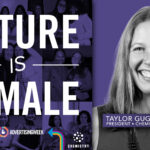By Lance Wolder, Head of Strategy, PadSquad
No moment is too big for marketers. With more than $1.2 trillion in consumer spending tied to seasonal tentpole moments — Easter, Mother’s and Father’s Day, Back-to-School, and the Holidays — brands should be showing up with high budgets and even higher expectations.
But let’s be clear: just showing up to these cultural moments isn’t enough. Success won’t arrive wrapped neatly in a bow. To break through in 2025, marketers must go beyond presence. They have to be personal.
Set Your Sights on Emotional Relevance
The numbers are undeniable. In 2025, shoppers are expected to spend over $34.1 billion on Mother’s Day alone. That number will only increase when combined with Father’s Day, which was anticipated to see spending totals of $22.4 billion in 2024. But if your creative leans on generic greeting cards, worn-out tropes, or paint-by-numbers executions, it will miss the mark—no question about it.
Great creative advertising doesn’t just reach people, it resonates. Mother’s and Father’s Day are two of the year’s most emotionally charged retail moments. Our campaign data shows that personalized, emotionally anchored creative drives deeper connections and outperforms bland, one-size-fits-all campaigns.
The brands that leaned into holiday-specific messaging saw 63% higher engagement and 29% stronger video completion rates than those that didn’t.
The Building Blocks of Breakthrough Campaigns
Video has always been a compelling way for brands to connect with customers. Kicking off your campaign with a cinematic CTV ad can capture attention with storytelling that emotionally pulls people in. More importantly, you can show up in meaningful ways, not with a sales pitch, but with a story worthy of your audience’s time.
Great advertising doesn’t just reach people, it has the power to create emotional resonance. A well-placed video ad that incorporates unfiltered reactions, shared family nostalgia, or even last-minute chaos can be the building blocks of a campaign.
The best-performing campaigns bridge the gap between media and creative, aligning placements and messages that answer two key questions: “What does this person need from us?” and “How can we best serve them?”
The ideal campaign is likely to kick off 4-6 weeks in advance, just as shoppers start thinking about how they can celebrate the mothers and fathers in their lives. And your creative should speak to the emotion behind the gift, not just the product itself.
As each holiday gets closer, shift your focus from inspiration to action. Leverage technology and interactive social experiences like interactive gift finders, product quizzes, or social-style rich media that will turn panic into purchase.
This creates a full-funnel experience that connects brand storytelling to performance and conversions.
Know Your Audience, and Keep the Conversation Going
Each holiday comes with a unique emotional blueprint. What moves a back-to-school shopper won’t work for someone buying for Mother’s Day. And lumping both parenting holidays together in one catch-all strategy? That’s another miss.
Audience data can help us build more informed personas that tap into the motivations behind spending. Increasingly, we’re seeing Millennials at the center of these moments, a group that values emotional resonance in the ads they see.
This means brand advertisers should lean into real, heartfelt storytelling for Mother’s Day, showcasing the sacrifice, impact, and everyday magic of motherhood. And when Father’s Day arrives, savvy marketers are re-engaging the same buyers with new, yet equally personal, creative content that reflects the uniqueness of dads.
Great campaigns start when you can understand who you’re reaching and why that person or group is engaging with you in the first place. Please don’t stop at demographics. Motivation is what moves us. Once you understand why your audience is shopping, your creative (and how you deliver it) can be matched with intent—and that’s worthy of celebration.
Make an Impact, Not a Stereotype
Listen. I make amazing barbecued chicken, and I love my grill. But let’s not reduce Father’s Day to grill tongs and lawn chairs. Just like the gifts, the ads need to feel like they’ve come from the heart.
Campaigns should reflect reality: families come in all shapes and sizes, emotions run deep, and parents of all kinds deserve to be seen. The most effective creative isn’t about leaning on cultural shorthand but leaning in.
In a world where consumers have endless choice, real relevance cuts through. The job shouldn’t be about relying on easy tropes—we must keep our foot on the gas, creating and executing campaigns worth our audiences’ time and attention.
By creating connective tissue between message, medium, and moment, we unlock the kind of storytelling that earns attention and action.
So, yes, use the cookout in a creative way. But don’t stop there. Show what it means, show why it matters, and show up like you mean it.
Because the best Mother’s and Father’s Day campaigns don’t just talk to audiences, they celebrate them.











